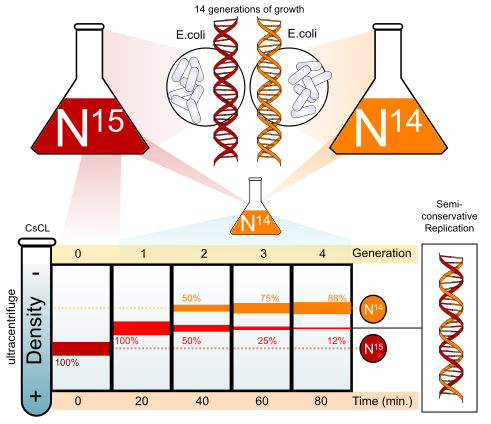Why bother with DNA replication?
It is essential to allow for daughter cells to have identical and complete copies of the genetic information. If it weren't for replication, the amount of genetic material present in cells would decrease and necessary information would go missing not allowing the cell to function.
Initially, there were three basic theories regarding how genetic information is replicated:
1) Dispersive: Where the new DNA was composed of patches of the old DNA and newly assembled DNA
2) Conservative: Where the old DNA strand was kept in tact and a completely new and separate strand was assembled
3) Semi-conservative: Where one strand of DNA served as a template strand. So the resulting DNA strands would have one on strand of nucleotides from the parent and one new strand.
These theories are illustrated in the above diagram.
The semi-conservative theory was proven to be correct by Meselson and Stahl through an experiment:
In short, DNA marked with a radioactive isotope of Nitrogen (Nitrogen-15) was left to replicate.
After one replication, all the DNA seemed to have both Nitrogen-15 from the parent DNA and Nitrogen-14 (normal Nitrogen) from there environment in equal share.
After the second generation, half of the Genetic information was still a mix of N-14 and N-15, however the other half was purely N-14.
These observations were indicative of semi-conservative replication.


Thank you again for your flawless service, and I look forward to working with you in the future.
ReplyDelete